NASA astronaut Peggy Whitson and two other spacefliers capped off a record-setting orbital mission with their return from the International Space Station.
This Week in HASS – term 3, week 9
OpenSTEM’s ® Understanding Our World® Units are designed to cover 9 weeks of the term, because we understand that life happens. Sports carnivals, excursions and other special events are also necessary parts of the school year and even if the calendar runs according to plan, having a little bit of breathing space at the end of term can be essential for teachers and students alike. We have many suggestions for activities that can keep the students engaged and learning if there is extra time at the end of term.
So this week is the last week of scheduled lessons in our term 3 units. This week our younger students are ending the term on a high note with a class party! Older students are completing their Reflections on the term’s Scientific Report and engaging in a discussion on the role of Science in our society – always topical.
Foundation/Prep/Kindy to Year 3
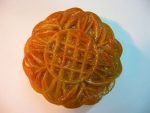 The second half of the year can be tough for younger students – they are often starting to get tired and attention may be flagging at this stage. In order to liven things up, the units for Foundation/Prep/Kindy (Unit F.3), Year 1 (Unit 1.3), Year 2 (Unit 2.3), Year 3 (Unit 3.3) and combined Foundation/Prep/Kindy and Year 1 (Unit F-1.3) have a class party scheduled for this week. A range of options are discussed in the Teacher Handbooks – building on year level appropriate material covered during the term. Our Food In the Past resource is always popular and even contains recipes tailored to match the stories covered by students earlier in the term. However, sometimes food is not practical in the classroom, in which case dress-ups, decorations and games can promote the party atmosphere! Our Games From the Past resource has a range of activities both new and familiar, which students love. These games are also matched to the places from the stories covered in the beginning of the term, allowing the teacher to provide a coherent theme for the term.
The second half of the year can be tough for younger students – they are often starting to get tired and attention may be flagging at this stage. In order to liven things up, the units for Foundation/Prep/Kindy (Unit F.3), Year 1 (Unit 1.3), Year 2 (Unit 2.3), Year 3 (Unit 3.3) and combined Foundation/Prep/Kindy and Year 1 (Unit F-1.3) have a class party scheduled for this week. A range of options are discussed in the Teacher Handbooks – building on year level appropriate material covered during the term. Our Food In the Past resource is always popular and even contains recipes tailored to match the stories covered by students earlier in the term. However, sometimes food is not practical in the classroom, in which case dress-ups, decorations and games can promote the party atmosphere! Our Games From the Past resource has a range of activities both new and familiar, which students love. These games are also matched to the places from the stories covered in the beginning of the term, allowing the teacher to provide a coherent theme for the term.
Years 3 to 6
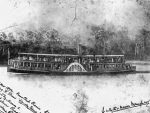 The older students have finished or are finishing off their Scientific Reports. This week there is an opportunity for them to reflect on what they have learnt during the term. The Student Workbook guides the students through the task of looking back at their work for the term, naming the enjoyable aspects of their projects, as well as any challenges encountered. Students are encouraged to think about alternate ways they could have approached their work, as well as recapping what they have learnt (an important step in integrating their knowledge). These skills of re-evaluating their own work and the processes they used are critical in the development of independent thinking and in teaching them how to manage their work, not only as they go on towards high school, but also for work habits in later life. In addition, we suggest a class discussion on the perspectives Science provides on issues in the world. How do modern perspectives differ from historical ones and what role has Science played in changing our understanding of these issues. The discussion of these points also addresses key parts of the curriculum. Students in Year 3 (Unit 3.7) will consider how their capital city or local community has changed over time. Those in Year 4 (Unit 4.3) can discuss our understanding of Australia before Europeans arrived and around the time of the First Fleet – how has our understanding of Aboriginal Australia changed over time? Year 5 (Unit 5.3) classes can compare colonial Australia to modern Australia and Year 6 (Unit 6.3) students will consider how Australia has changed since Federation.
The older students have finished or are finishing off their Scientific Reports. This week there is an opportunity for them to reflect on what they have learnt during the term. The Student Workbook guides the students through the task of looking back at their work for the term, naming the enjoyable aspects of their projects, as well as any challenges encountered. Students are encouraged to think about alternate ways they could have approached their work, as well as recapping what they have learnt (an important step in integrating their knowledge). These skills of re-evaluating their own work and the processes they used are critical in the development of independent thinking and in teaching them how to manage their work, not only as they go on towards high school, but also for work habits in later life. In addition, we suggest a class discussion on the perspectives Science provides on issues in the world. How do modern perspectives differ from historical ones and what role has Science played in changing our understanding of these issues. The discussion of these points also addresses key parts of the curriculum. Students in Year 3 (Unit 3.7) will consider how their capital city or local community has changed over time. Those in Year 4 (Unit 4.3) can discuss our understanding of Australia before Europeans arrived and around the time of the First Fleet – how has our understanding of Aboriginal Australia changed over time? Year 5 (Unit 5.3) classes can compare colonial Australia to modern Australia and Year 6 (Unit 6.3) students will consider how Australia has changed since Federation.
This Week in HASS – term 3, week 8
This week our younger students are putting together a Class Museum, while older students are completing their Scientific Report.
Foundation/Prep/Kindy to Year 3
 Students in Foundation/Prep/Kindy (Units F.3 and F-1.3), as well as those in Years 1 (Unit 1.3). 2 (Unit 2.3) and 3 (Unit 3.3) are all putting together Class Museums of items of historical interest, either found at school or brought from home. Since the activity is similar (although explored to different depths by different year levels), there is the option for teachers to combine efforts across classes, and even across year level to make a more substantial Museum display. The Class Museum is an activity designed to assist students to consider how life has changed and what aspects are similar and different. Students should consider which items are easily recognisable and which are harder to identify. They can practise different points of view by imagining themselves using these objects and living in the past. Teachers can link this back to the stories read in the first weeks of term and allow students to compare their own lives with different types of past experiences of daily and family life. Museum Labels and a resource on Museums are provided to gain an understanding of how and why objects are displayed in museums.
Students in Foundation/Prep/Kindy (Units F.3 and F-1.3), as well as those in Years 1 (Unit 1.3). 2 (Unit 2.3) and 3 (Unit 3.3) are all putting together Class Museums of items of historical interest, either found at school or brought from home. Since the activity is similar (although explored to different depths by different year levels), there is the option for teachers to combine efforts across classes, and even across year level to make a more substantial Museum display. The Class Museum is an activity designed to assist students to consider how life has changed and what aspects are similar and different. Students should consider which items are easily recognisable and which are harder to identify. They can practise different points of view by imagining themselves using these objects and living in the past. Teachers can link this back to the stories read in the first weeks of term and allow students to compare their own lives with different types of past experiences of daily and family life. Museum Labels and a resource on Museums are provided to gain an understanding of how and why objects are displayed in museums.
Years 3 to 6
 Older students are completing their main term research projects by finishing their Scientific Reports. This week students are concentrating on finishing their reports, drawing their Conclusions, making sure that their Bibliography is correct and formatting their report, including images, graphs and tables. For Year 3 students (Unit 3.7), the report will cover an aspect of the history of their capital city or local community. Year 4 students (Unit 4.3) are reporting on an investigation into Australia at the time of European contact and the start of European settlement. Students in Year 5 (Unit 5.3) are examining topics from Australian colonial history, and students in Year 6 (Unit 6.3) are researching topics from Federation and early 20th century Australian history. There is plenty of scope for incorporating digital technologies into the final version of the scientific report, especially for students in the upper year levels. Formatting a document correctly is an essential skill and addresses many aspects of the digital technologies curriculum, adding the possibility of another curriculum section for the teacher to mark as done for the term.
Older students are completing their main term research projects by finishing their Scientific Reports. This week students are concentrating on finishing their reports, drawing their Conclusions, making sure that their Bibliography is correct and formatting their report, including images, graphs and tables. For Year 3 students (Unit 3.7), the report will cover an aspect of the history of their capital city or local community. Year 4 students (Unit 4.3) are reporting on an investigation into Australia at the time of European contact and the start of European settlement. Students in Year 5 (Unit 5.3) are examining topics from Australian colonial history, and students in Year 6 (Unit 6.3) are researching topics from Federation and early 20th century Australian history. There is plenty of scope for incorporating digital technologies into the final version of the scientific report, especially for students in the upper year levels. Formatting a document correctly is an essential skill and addresses many aspects of the digital technologies curriculum, adding the possibility of another curriculum section for the teacher to mark as done for the term.
OpenStem’s Understanding Our World program ensures that student’s work for assessment is completed well before the end of term, decreasing the rush to get everything assessed in the final weeks of term. It is our aim to support teachers and facilitate the processes involved in both teaching and assessment.
This Week in HASS – term 3, week 7
This week students are starting the final sections of their research projects and Scientific Reports. Our younger students are also preparing to set up a Class Museum.
Foundation/Prep/Kindy to Year 3
 Our youngest students (Unit F.3) also complete a Scientific Report. By becoming familiar with the overall layout and skills associated with the scientific process at a young age, by the time students reach high school the process will be second-nature and their skills fine-tuned. This week teachers discuss how Science helps us find out things about the world. Teachers and students are also collecting material to form a Class Museum. Students in integrated, multi-age classes (Unit F-1.3) and Years 1 (Unit 1.3), 2 (Unit 2.3) and 3 (Unit 3.3) are undertaking a similar set of activities this week, however, in increasing depth as appropriate for each year level, and with different subject matter, according to the class focus. By Year 3 (Unit 3.3), students are writing full sentences and even short paragraphs, focusing on a topic in the local history of their community or capital city, in their Scientific Report.
Our youngest students (Unit F.3) also complete a Scientific Report. By becoming familiar with the overall layout and skills associated with the scientific process at a young age, by the time students reach high school the process will be second-nature and their skills fine-tuned. This week teachers discuss how Science helps us find out things about the world. Teachers and students are also collecting material to form a Class Museum. Students in integrated, multi-age classes (Unit F-1.3) and Years 1 (Unit 1.3), 2 (Unit 2.3) and 3 (Unit 3.3) are undertaking a similar set of activities this week, however, in increasing depth as appropriate for each year level, and with different subject matter, according to the class focus. By Year 3 (Unit 3.3), students are writing full sentences and even short paragraphs, focusing on a topic in the local history of their community or capital city, in their Scientific Report.
Years 3 to 6
 Students in integrated Year 3/4 classes (Unit 3.7) and those in Year 4 (Unit 4.3), 5 (Unit 5.3) and 6 (Unit 6.3) are concentrating on analysis of data this week, for the final stages of their Scientific Report. It is expected that students have gathered information on their chosen research topic on an aspect of Australian history for the term by now and are analysing this information in order to answer their research questions and start to draw conclusions about their topic. This week’s lessons focus on pulling everything together towards a a full, final report. Teachers are able to quickly identify which students need extra guidance by referring to the Student Workbook, which tracks each student’s progress on a weekly basis. Thus feedback, intervention and additional support can be offered timeously and before the term marks are collated, allowing each student the chance to achieve their best.
Students in integrated Year 3/4 classes (Unit 3.7) and those in Year 4 (Unit 4.3), 5 (Unit 5.3) and 6 (Unit 6.3) are concentrating on analysis of data this week, for the final stages of their Scientific Report. It is expected that students have gathered information on their chosen research topic on an aspect of Australian history for the term by now and are analysing this information in order to answer their research questions and start to draw conclusions about their topic. This week’s lessons focus on pulling everything together towards a a full, final report. Teachers are able to quickly identify which students need extra guidance by referring to the Student Workbook, which tracks each student’s progress on a weekly basis. Thus feedback, intervention and additional support can be offered timeously and before the term marks are collated, allowing each student the chance to achieve their best.
 Each year level focuses on a different aspect of Australian history and enough topics are supplied to ensure that each student is working on new information, even in multi-age classes. Instead of finding a continual stream of new, novel HASS units, or repeating material some students have covered before, OpenSTEM’s Understanding Our World® program allows teachers to tailor the same units to look different for each year level, thus ensuring that students are practising their skills on new material, as well as covering year-level appropriate skills and content. By the time students are in Year 6, they will have covered the full suite of Australian History up to the 20th century, as well as having studied each continent in turn. Civics and Citizenship and Economics and Business for part of this integrated whole and do not have to be taught separately. They will be ready to enter high school with a full suite of honed research and problem-solving skills, as well as having covered the core material necessary.
Each year level focuses on a different aspect of Australian history and enough topics are supplied to ensure that each student is working on new information, even in multi-age classes. Instead of finding a continual stream of new, novel HASS units, or repeating material some students have covered before, OpenSTEM’s Understanding Our World® program allows teachers to tailor the same units to look different for each year level, thus ensuring that students are practising their skills on new material, as well as covering year-level appropriate skills and content. By the time students are in Year 6, they will have covered the full suite of Australian History up to the 20th century, as well as having studied each continent in turn. Civics and Citizenship and Economics and Business for part of this integrated whole and do not have to be taught separately. They will be ready to enter high school with a full suite of honed research and problem-solving skills, as well as having covered the core material necessary.
This Week in HASS – term 3, week 6
This week all our students are hard at work examining the objects they are using for their research projects. For the younger students these are objects that will be used to generate a Class Museum. For the older students, the objects of study relate to their chosen topic in Australian History.
Foundation / Prep / Kindy to Year 3
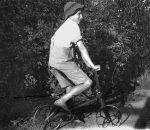 Students in Foundation/Prep/Kindy (Unit F.3) are examining items from the past and completing their Scientific Report by drawing these items in the Method section of the report. We also ask students to analyse their Data by drawing a picture of how people would have used that item in the past. Students in combined Foundation/Prep/Kindy and Year 1 classes (Unit F-1.3), as well as students in Year 1 (Unit 1.3), 2 (Unit 2.3) and 3 (Unit 3.3) are also addressing the Method, Data and Analysis sections of their report by listing, describing and drawing the sources and information which the teacher has helped them to locate. The sources should include items which can be used to make a Class Museum, as well as old photographs, paintings, books, newspapers etc. Teachers can guide class discussions around how items were used in the past – which are familiar, and which are not and compare with the stories read in the first weeks of term.
Students in Foundation/Prep/Kindy (Unit F.3) are examining items from the past and completing their Scientific Report by drawing these items in the Method section of the report. We also ask students to analyse their Data by drawing a picture of how people would have used that item in the past. Students in combined Foundation/Prep/Kindy and Year 1 classes (Unit F-1.3), as well as students in Year 1 (Unit 1.3), 2 (Unit 2.3) and 3 (Unit 3.3) are also addressing the Method, Data and Analysis sections of their report by listing, describing and drawing the sources and information which the teacher has helped them to locate. The sources should include items which can be used to make a Class Museum, as well as old photographs, paintings, books, newspapers etc. Teachers can guide class discussions around how items were used in the past – which are familiar, and which are not and compare with the stories read in the first weeks of term.
Years 3 to 6
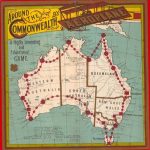 Older students are expected to analyse their Data in increasing detail relevant to their year-level, as well as listing sources in the Method section of their Scientific Reports. Students in Year 4 (Unit 4.3) are researching a topic from Australia at the time of contact with Europeans, which includes topics in Aboriginal and early colonial history. Students should consider each source and what information they can get from the source. In addition students should think about how objects, pictures and texts were used in the past and what inherent biases might be present. Students in Year 5 (Unit 5.3) are researching a topic from Australian colonial history. Teachers should guide students through the process of determining whether they are dealing with a primary or secondary source, as well as how to use that source to learn more about the past. Inherent bias in different sources should be discussed. Students in Year 6 (Unit 6.3) are researching a topic surrounding Federation and events in Australia in the early 20th century. Many of the sources available contain both primary and secondary information and students should be starting to develop an understanding of how to use, analyse and reference these sources. In preparation for the requirements of high school, teachers should guide these students through the process of building an interpretation of their analysis which is substantiated through reference to their sources (listed in the Bibliography of their report). Students should be able to show where they got their information and how they are interpreting that information. For students in Year 6, the Student Workbook is more of a guide for writing a complete Scientific Report, which they are expected to compile more or less independently.
Older students are expected to analyse their Data in increasing detail relevant to their year-level, as well as listing sources in the Method section of their Scientific Reports. Students in Year 4 (Unit 4.3) are researching a topic from Australia at the time of contact with Europeans, which includes topics in Aboriginal and early colonial history. Students should consider each source and what information they can get from the source. In addition students should think about how objects, pictures and texts were used in the past and what inherent biases might be present. Students in Year 5 (Unit 5.3) are researching a topic from Australian colonial history. Teachers should guide students through the process of determining whether they are dealing with a primary or secondary source, as well as how to use that source to learn more about the past. Inherent bias in different sources should be discussed. Students in Year 6 (Unit 6.3) are researching a topic surrounding Federation and events in Australia in the early 20th century. Many of the sources available contain both primary and secondary information and students should be starting to develop an understanding of how to use, analyse and reference these sources. In preparation for the requirements of high school, teachers should guide these students through the process of building an interpretation of their analysis which is substantiated through reference to their sources (listed in the Bibliography of their report). Students should be able to show where they got their information and how they are interpreting that information. For students in Year 6, the Student Workbook is more of a guide for writing a complete Scientific Report, which they are expected to compile more or less independently.
This Week in HASS – term 3, week 5
This week students in all year levels are working on their research project for the term. Our youngest students are looking at items and pictures from the past, while our older students are collecting source material for their project on Australian history.
Foundation/Prep/Kindy to Year 3
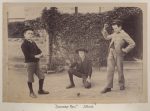 The focus of this term is an investigation into the past and how we can find out about past events. For students in Foundation/Prep/Kindy (Units F.1 and F-1.3), Years 1 (Unit 1.3), 2 (Unit 2.3) and 3 (Unit 3.3) it is recommended that the teacher bring in sources of information about the past for the students to examine. Teachers can tailor these to suit a particular direction for their class. Examples of possible sources include old toys, old books, historic photographs, texts and items about local history (including the school itself), images of old paintings, old newspaper articles which can be accessed online etc. OpenSTEM provides resources which can be used for these investigations: e.g. Historic Photographs of Families, Modes of Transport 100 Years Ago, Brisbane Through the Years, Perth Through the Years, resources on floods in Brisbane and Gundagai, bush fires in Victoria, on the different colonies in Australia etc. Teachers can also use the national and state resources such as the State Library of Queensland, particularly their Picture Archive; the State Library of NSW; the State Library of South Australia, particularly their images collection; the National Archives of Australia; Trove, which archives old newspapers in Australia; Museums Victoria, and many similar sites. Students should also be encouraged to bring material from home, which can be built up into a Class Museum.
The focus of this term is an investigation into the past and how we can find out about past events. For students in Foundation/Prep/Kindy (Units F.1 and F-1.3), Years 1 (Unit 1.3), 2 (Unit 2.3) and 3 (Unit 3.3) it is recommended that the teacher bring in sources of information about the past for the students to examine. Teachers can tailor these to suit a particular direction for their class. Examples of possible sources include old toys, old books, historic photographs, texts and items about local history (including the school itself), images of old paintings, old newspaper articles which can be accessed online etc. OpenSTEM provides resources which can be used for these investigations: e.g. Historic Photographs of Families, Modes of Transport 100 Years Ago, Brisbane Through the Years, Perth Through the Years, resources on floods in Brisbane and Gundagai, bush fires in Victoria, on the different colonies in Australia etc. Teachers can also use the national and state resources such as the State Library of Queensland, particularly their Picture Archive; the State Library of NSW; the State Library of South Australia, particularly their images collection; the National Archives of Australia; Trove, which archives old newspapers in Australia; Museums Victoria, and many similar sites. Students should also be encouraged to bring material from home, which can be built up into a Class Museum.
Years 3 to 6
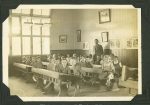 As students in Years 3 (Unit 3.7), 4 (Unit 4.3), 5 (Unit 5.3) and 6 (Unit 6.3) move into the period of gathering information from sources to address their research question, teachers should guide them to consider the nature of each source and how to record it. Resources such as Primary and Secondary Sources and Historical Sources aid in understanding the context of different kinds of sources and teachers should assist students to record the details of each source for their Method section of their Scientific Report. Recording these sources in detail is also essential for being able to compile a Bibliography, which is required to accompany the report. OpenSTEM resources are listed for each research topic for these units, but students (and teachers) should feel free to complement these with any additional material such as online collections of images and newspaper articles (such as those listed in the paragraph above). These will help students to achieve a more unique presentation for their report and demonstrate the ability to collate a variety of information, thus earning a higher grade. Using a wide range of sources will also give students a wider appreciation for their chosen topic in Australian history.
As students in Years 3 (Unit 3.7), 4 (Unit 4.3), 5 (Unit 5.3) and 6 (Unit 6.3) move into the period of gathering information from sources to address their research question, teachers should guide them to consider the nature of each source and how to record it. Resources such as Primary and Secondary Sources and Historical Sources aid in understanding the context of different kinds of sources and teachers should assist students to record the details of each source for their Method section of their Scientific Report. Recording these sources in detail is also essential for being able to compile a Bibliography, which is required to accompany the report. OpenSTEM resources are listed for each research topic for these units, but students (and teachers) should feel free to complement these with any additional material such as online collections of images and newspaper articles (such as those listed in the paragraph above). These will help students to achieve a more unique presentation for their report and demonstrate the ability to collate a variety of information, thus earning a higher grade. Using a wide range of sources will also give students a wider appreciation for their chosen topic in Australian history.


My grade 4 son's review is below. I think he liked seeing the patterns it made. It was just a…
Brad